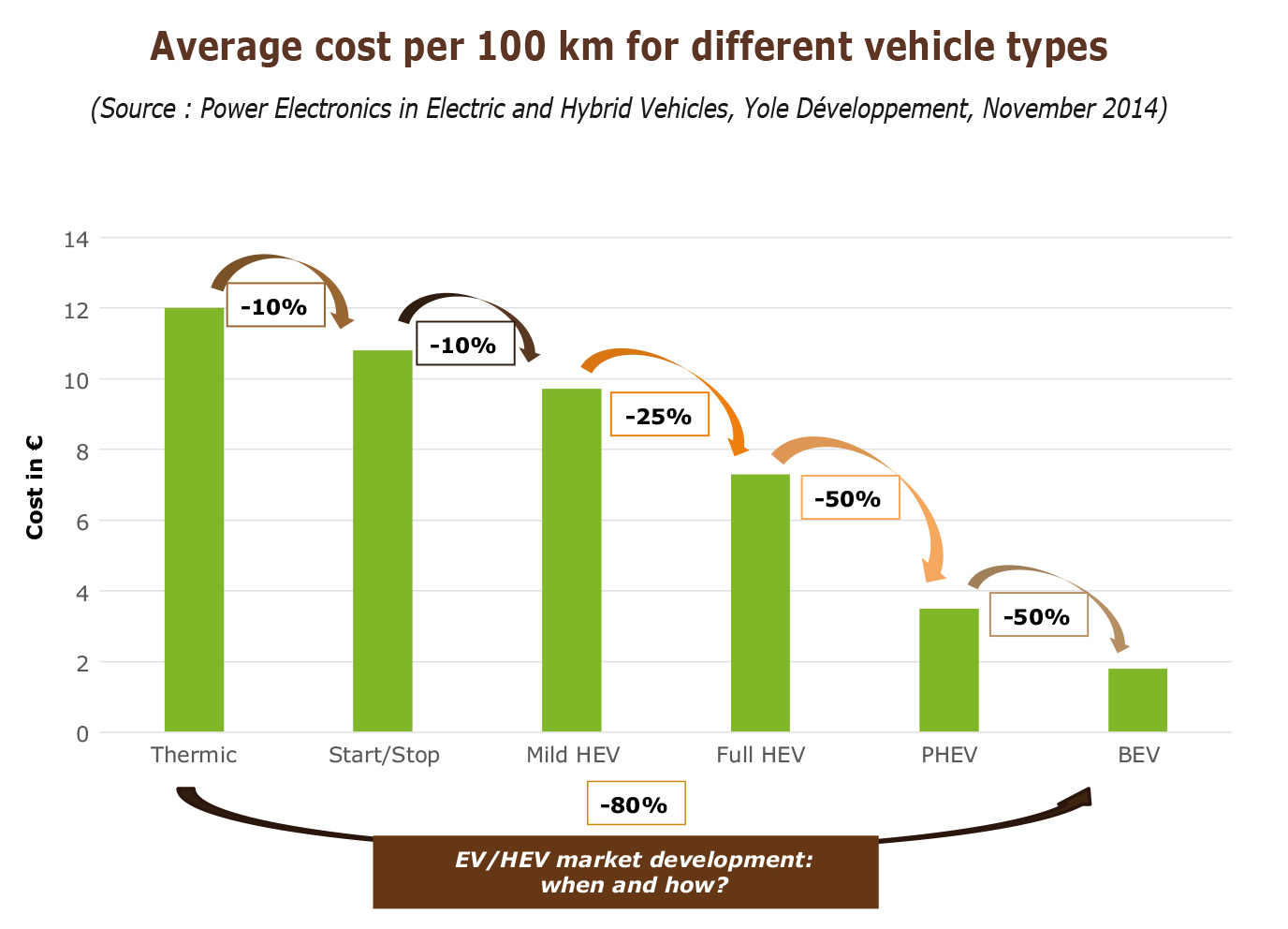The EV/HEV supply chain is evolving
The EV/HEV supply chain is evolving and power electronic module manufacturing attracts more and more companies, car makers, modules suppliers, chip makers... to develop their own expertise, announces Yole Développement, in its latest report 'Power Electronics in Electric and Hybrid Vehicles'. Industrials develop innovative technologies at the substrate, integration and packaging levels, to enhance power module performance and push the EV/HEV market forward.
In the report, Yole proposes an overview of the power electronics in EV and HEV with a deep analysis of the market advancements, a special focus on the Chinese industry as well as a complete description of the supply chain and its evolution. Yole’s analysis also presents updated market forecasts for EV and HEV, as well as associated power electronics.
According to automotive experts, electric and hybrid vehicles have been announced as a huge market over the last few years. However, in 2013, only 100,000 100% electric vehicles were sold, and only 2m EV/HEV cars in total (Source: Power Electronics in Electric and Hybrid Vehicles report, Yole, Nov. 2014).
In 2014, technological and architectural upgrades have been made by the key players of this industry and they are now ready to deploy. Battery cost reduction, power density increase, charging infrastructure development… the innovative technologies are pushing the EV/HEV market forward and cause cost reduction: “Due to the market growth and the technologies evolution, the price difference between EV/HEV and gas powered vehicles will progressively shrink and accelerate the development of this market”, adds Dr Pierric Gueguen, Activity Leader, Power Electronics and Compound Semi., Yole Développement.

But it is difficult today to say if such innovations will really impact the market. Indeed, according to industrials, the most important step is still to convince the end-users to change their habits and transition to EV/HEV. And this could be helped by electric energy’s low cost and governmental incentives...
The automotive industry know-how has been historically built around the combustion engine. The transition to EV/HEV technology is slow and based on the know-how transformation from combustion engine to power electronics including inverters and power modules, the key EV/HEV vehicles ingredients.
Under this context, the supply chain is evolving with a strong competition at the power modules manufacturing level, according to Yole’s analysis. Indeed, EV/HEV players are all converging on the power module manufacturing:
- Car markers develop specific strategies to integrate in their activities, inverter/converters and power modules manufacturing and so go down the supply chain. For example, beginning of 2014, Mitsubishi Electric announced the development of EV motor drive system with built-in silicon carbide inverter (Feb. 2014 – Source: Mitsubishi Electric website).
- Inverter/converter makers such as Valeo, follow the same strategy and develop a specific know-how dedicated to power module technologies.
- At the discrete component level, component manufacturers expand their expertise and think towards systems-level perspective by developing power module solutions. In Sept. 2014, Infineon Technologies reaffirms its leading position in power electronics modules and components for automotive industry, despite of a weak power semiconductor market, for example.
- In parallel, Robert Bosch, initially supplier of power modules, expands its expertise towards both directions, components and inverters/converters. In January 2014, the company confirms its commitment to EV market with Chrysler, by supplying inverters.


